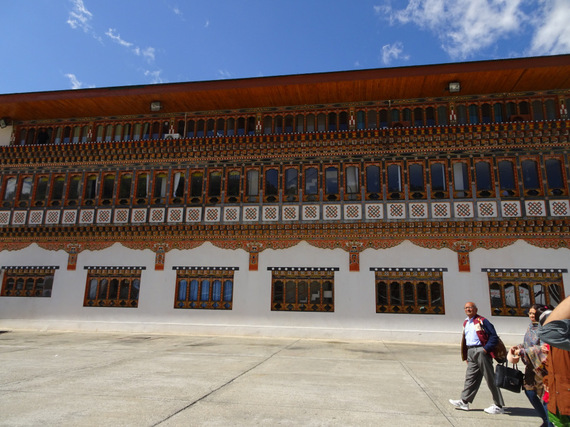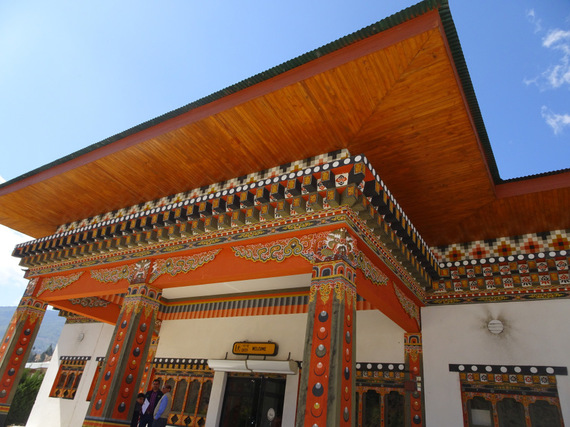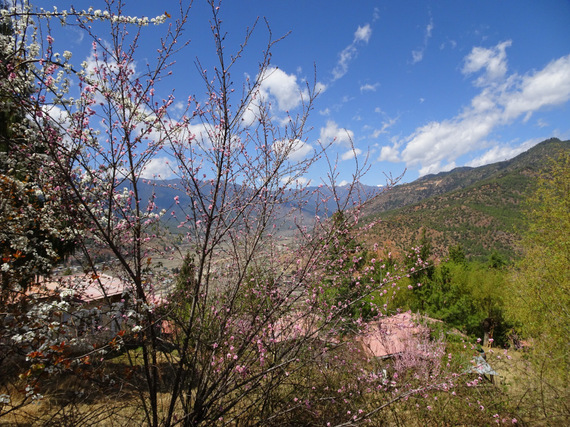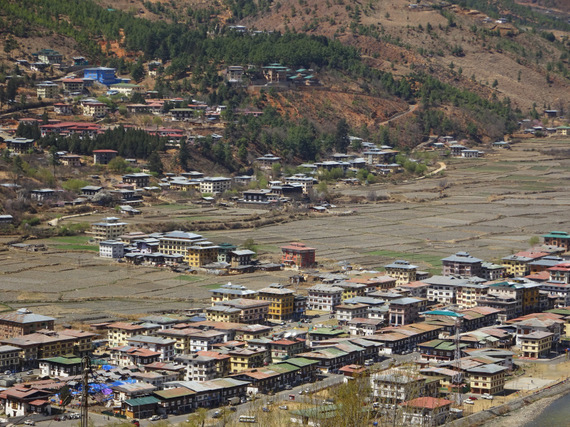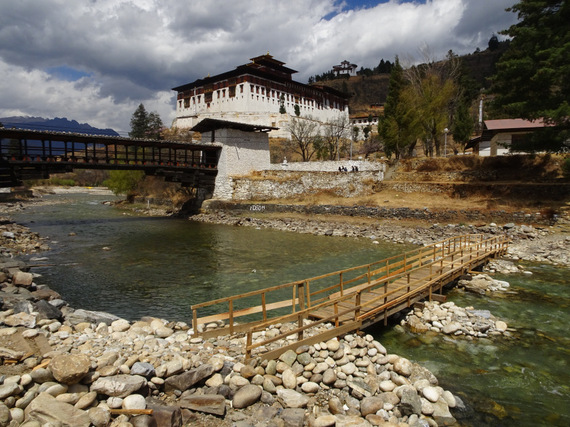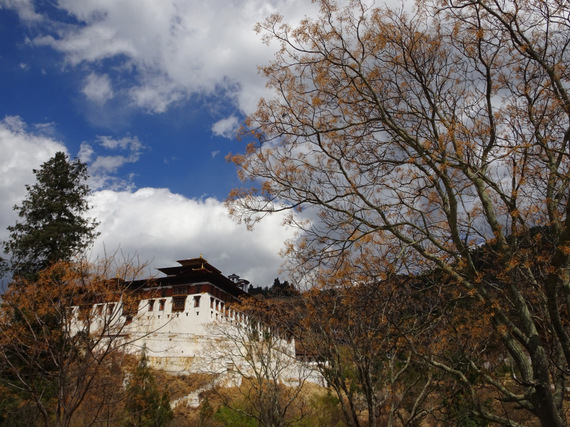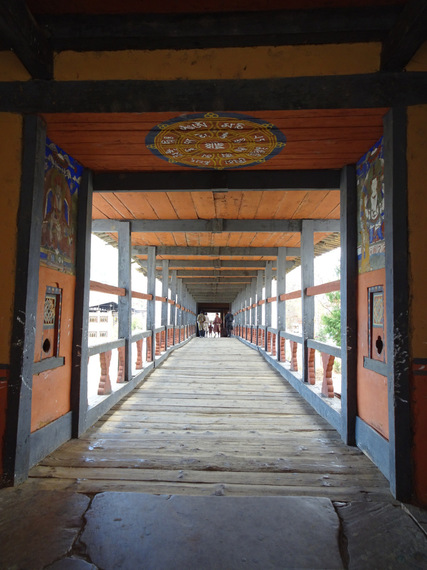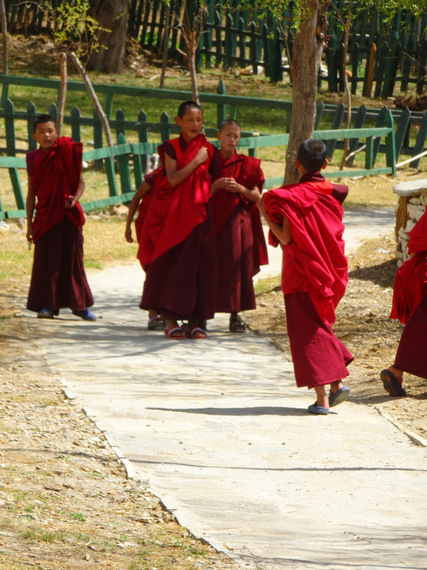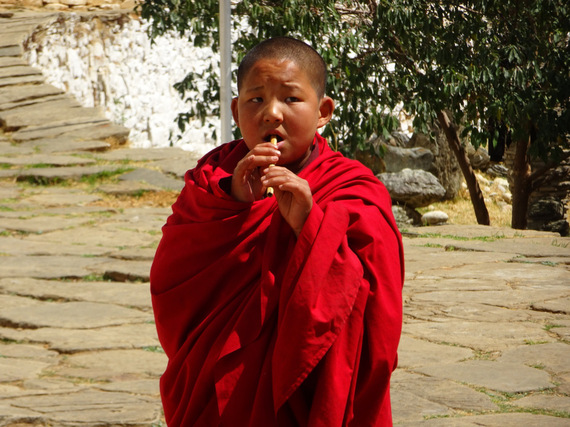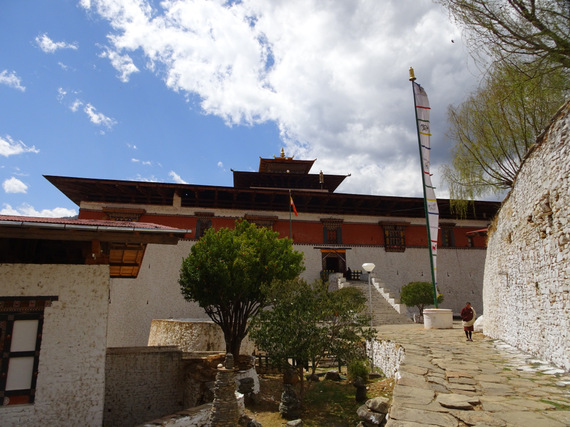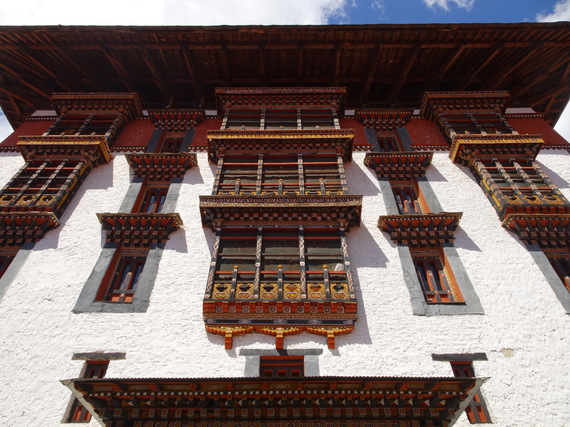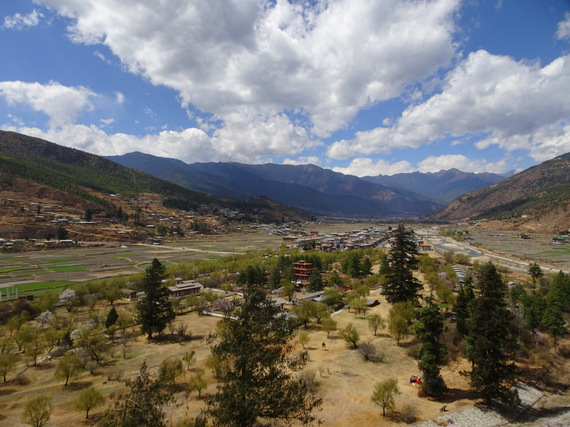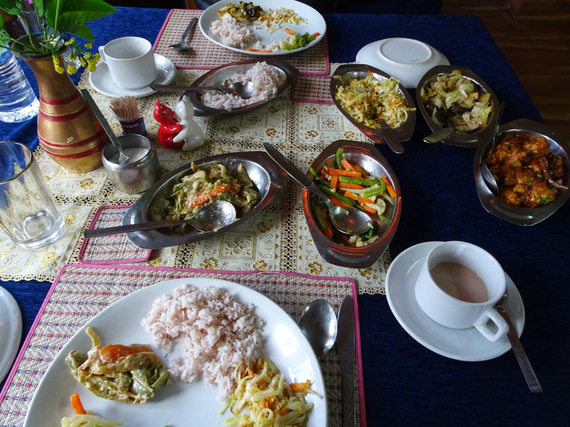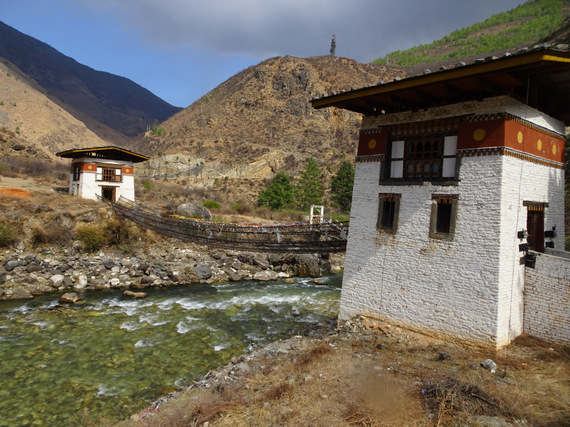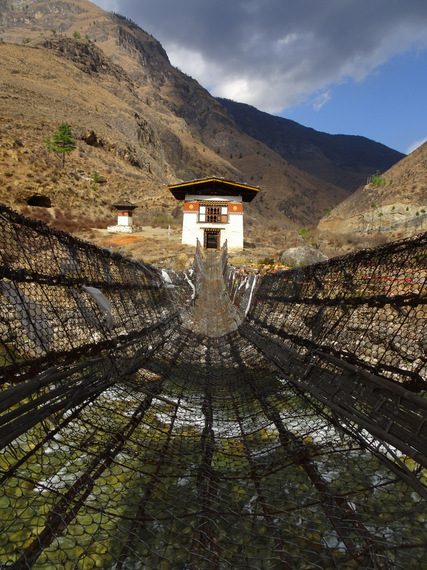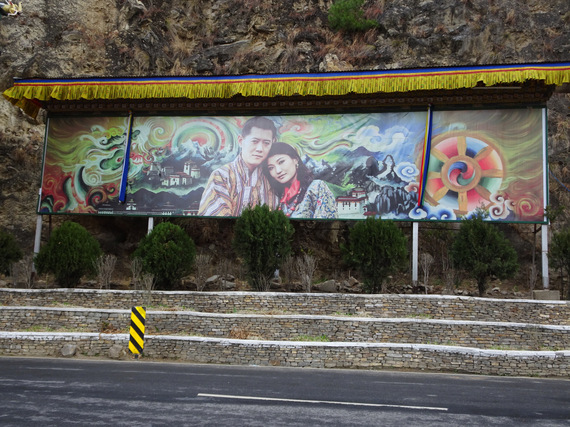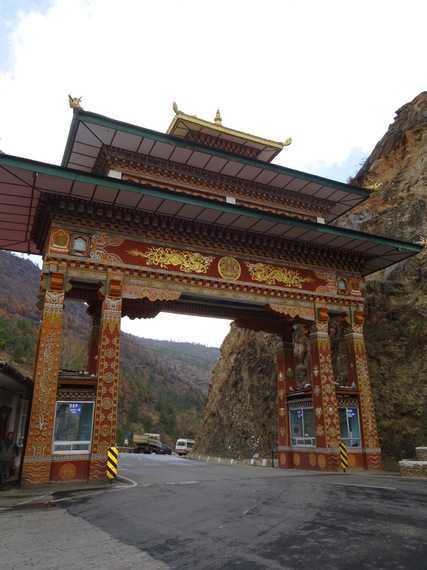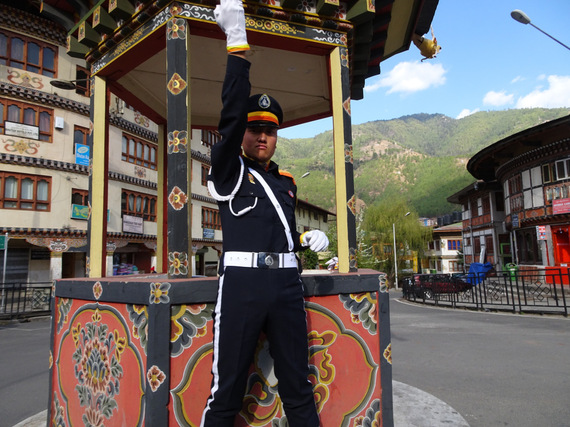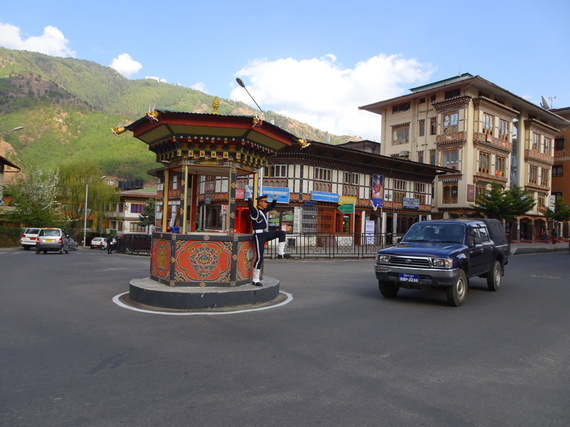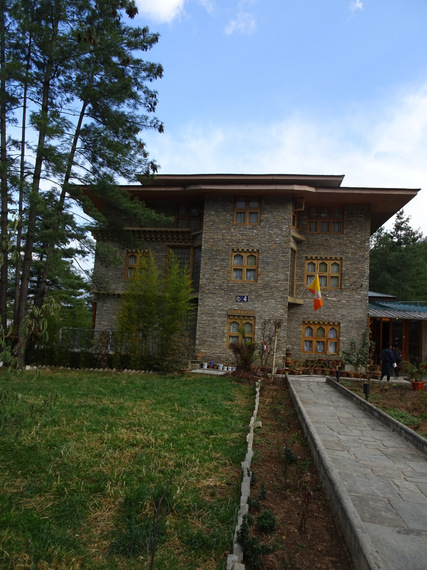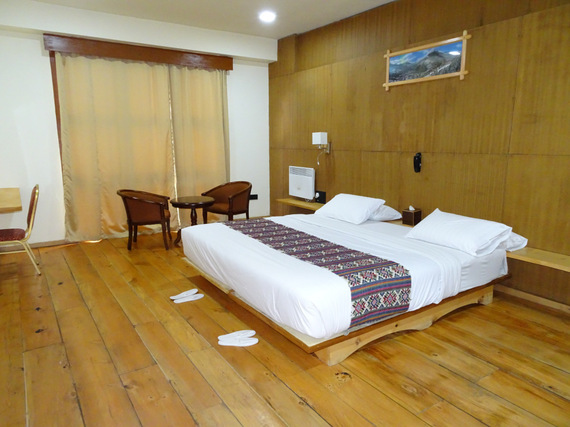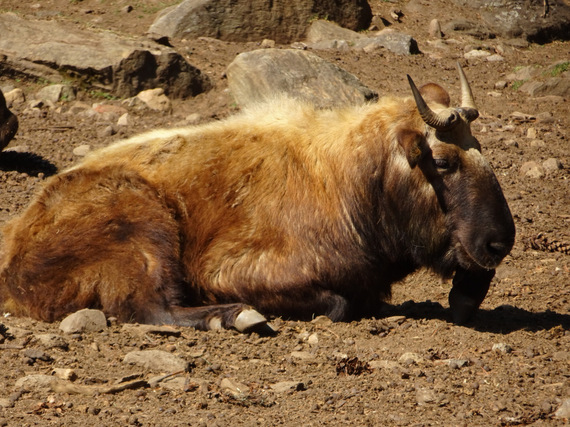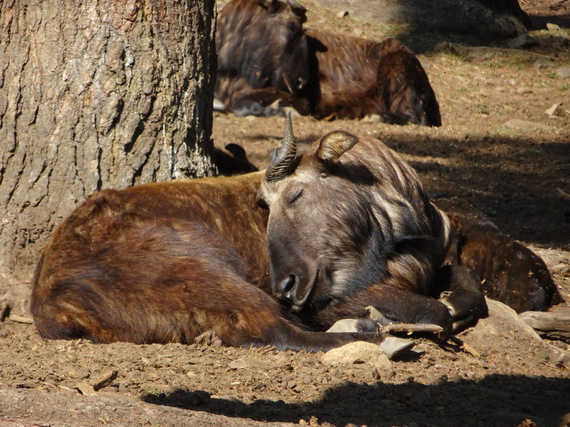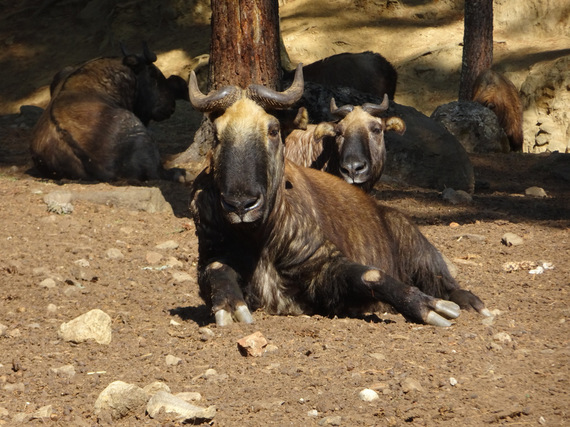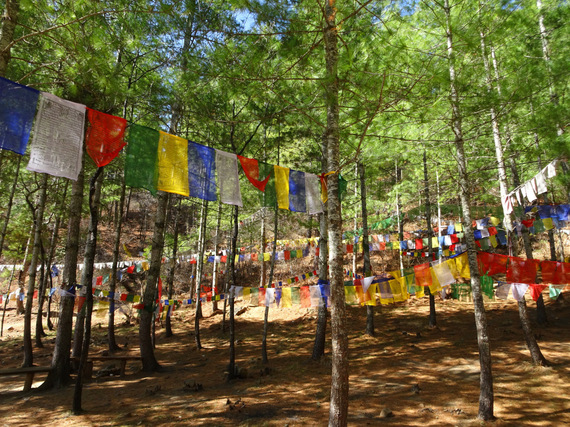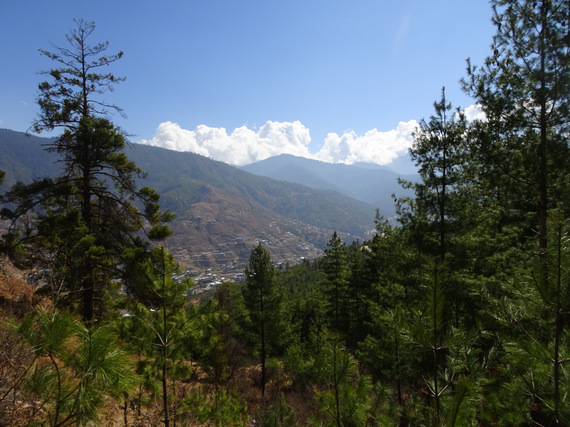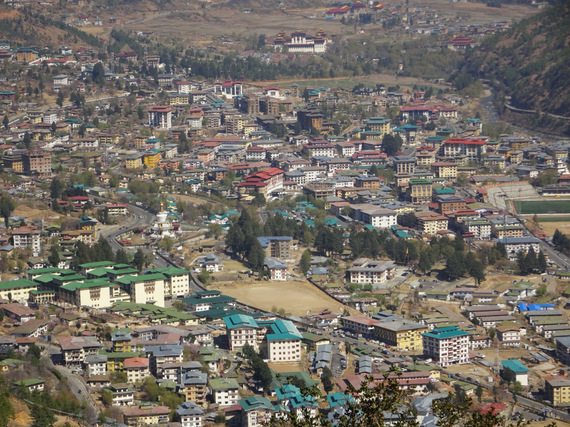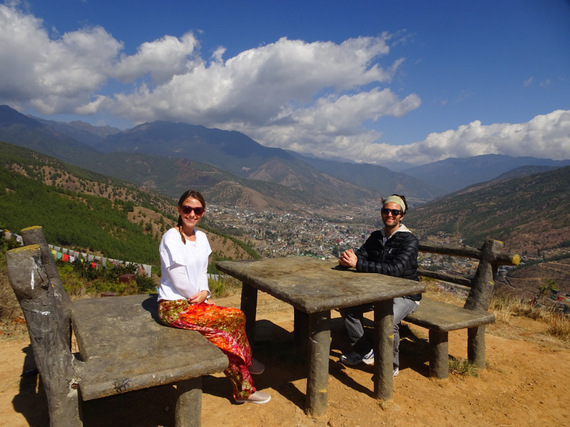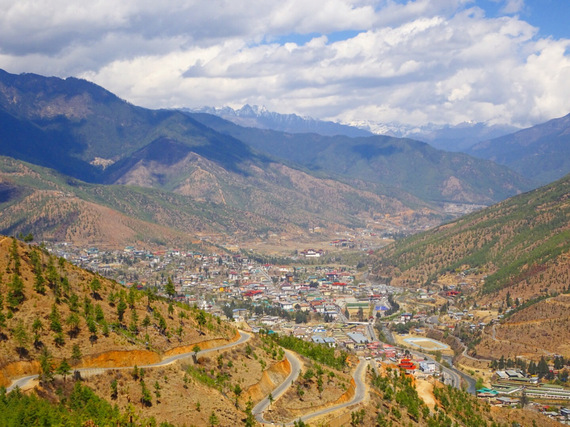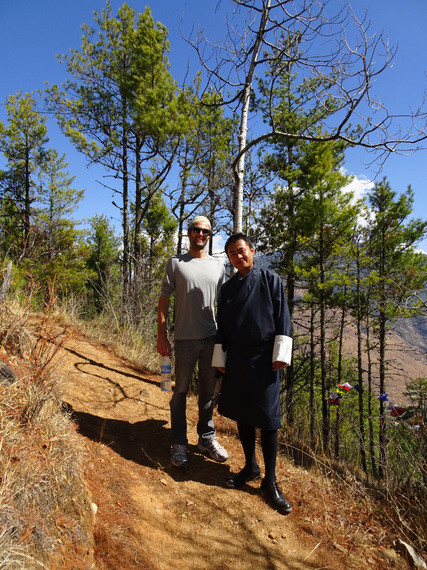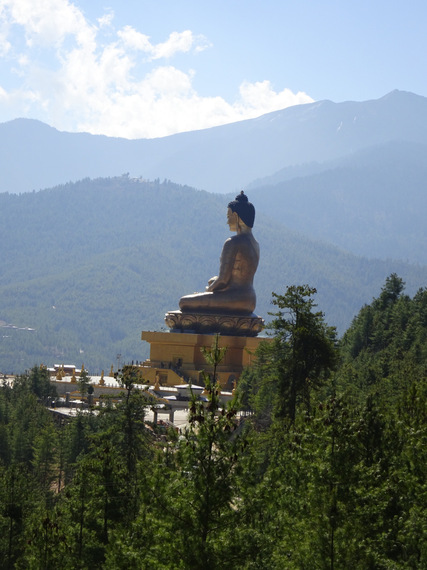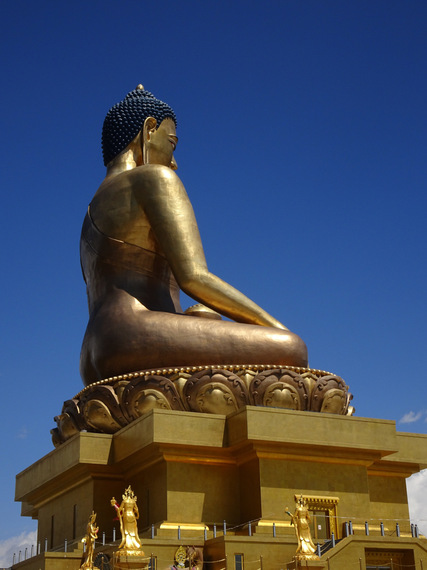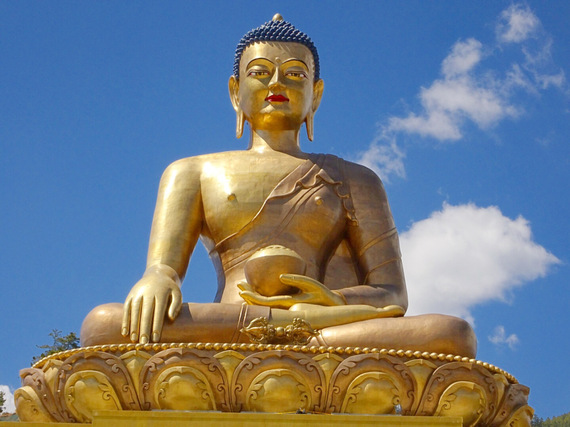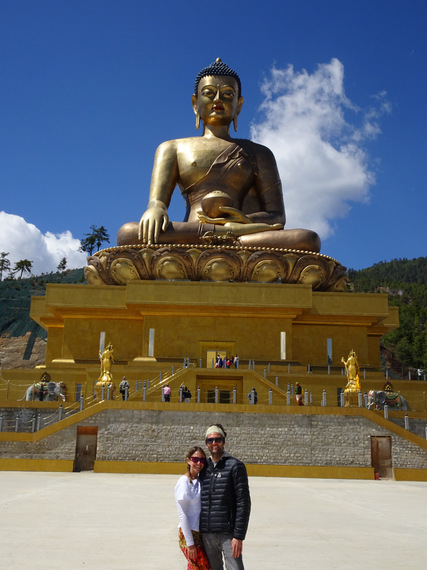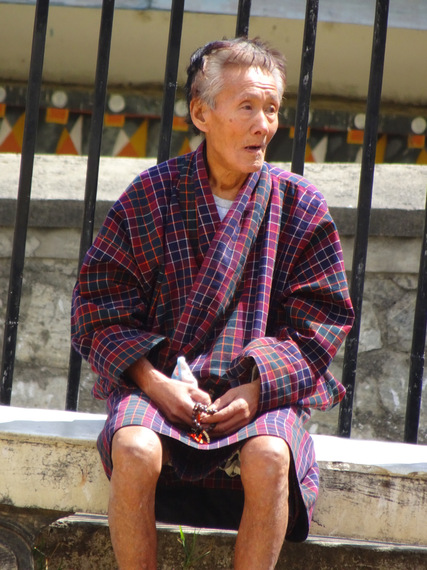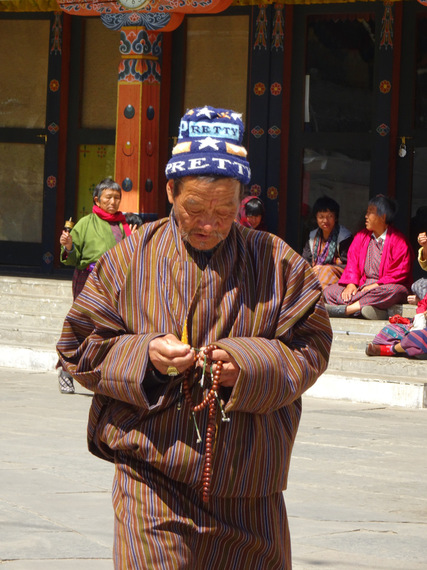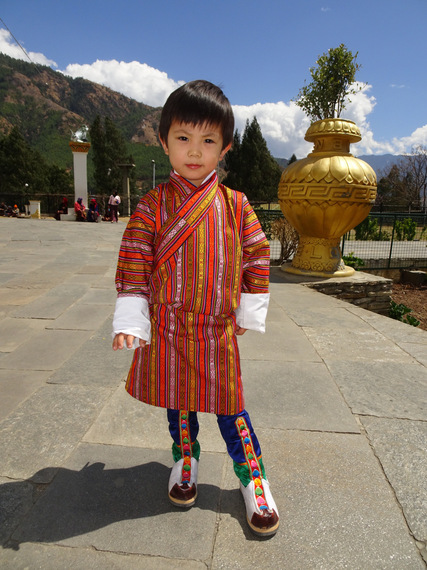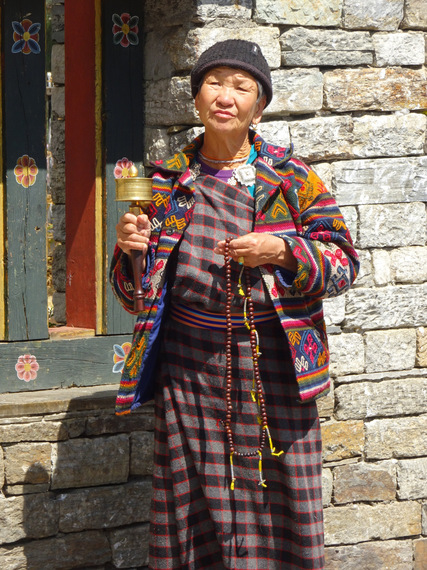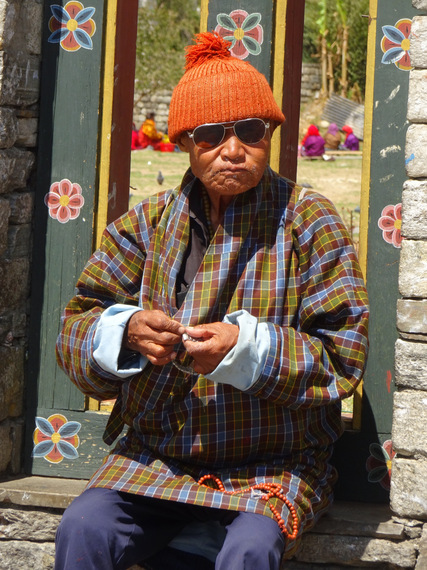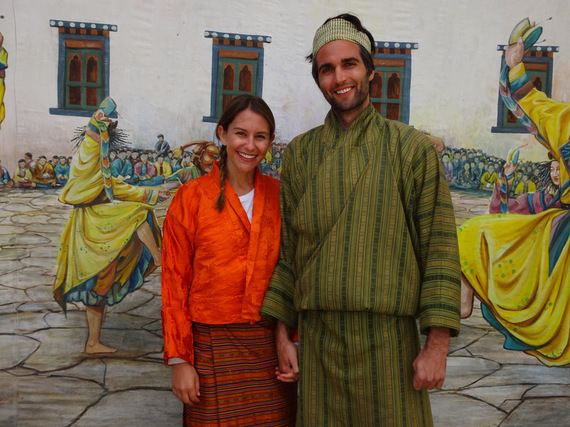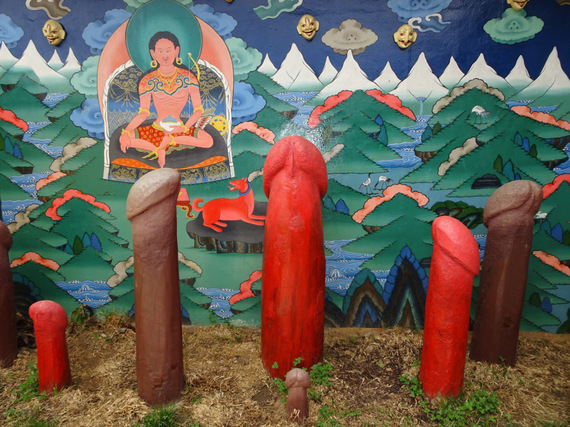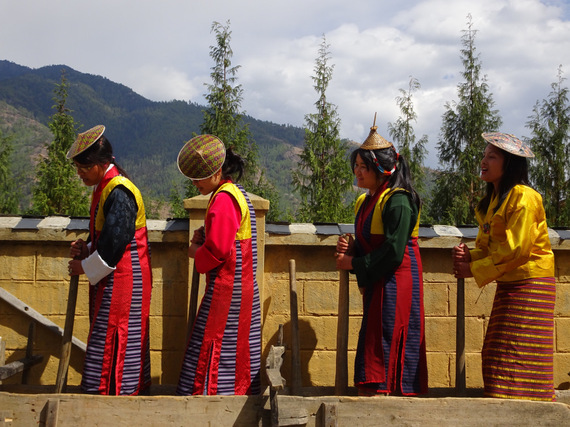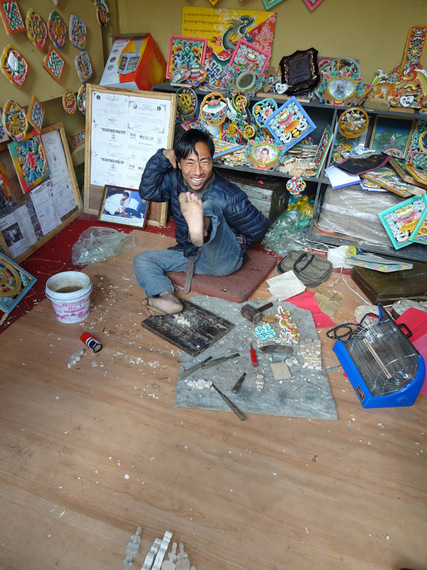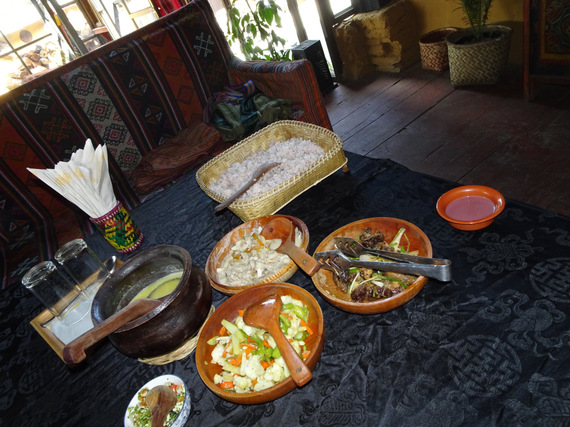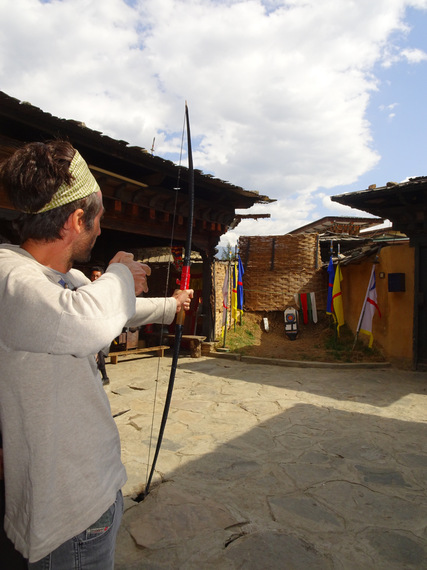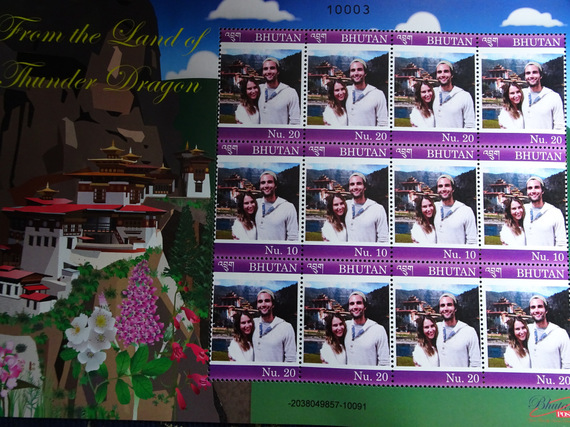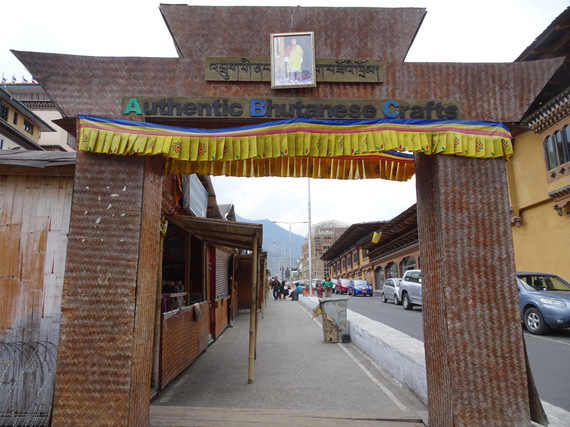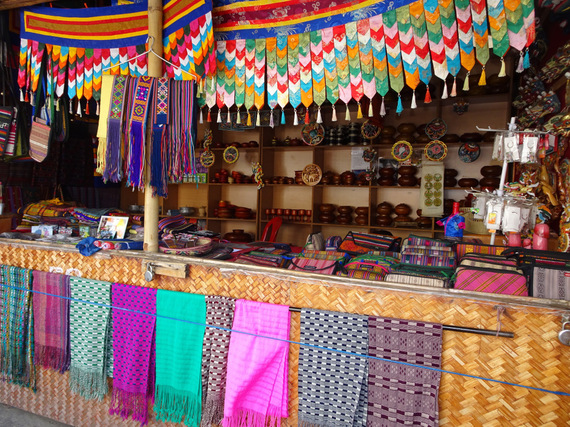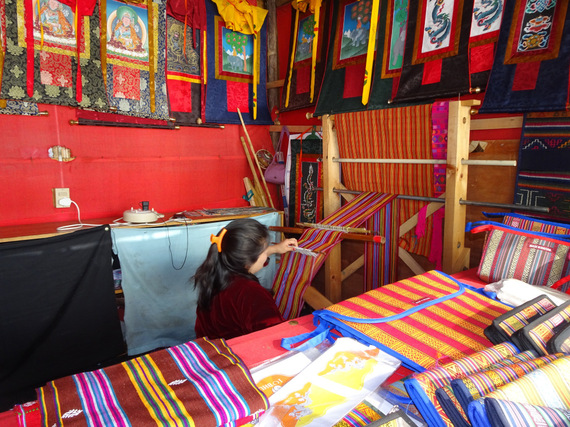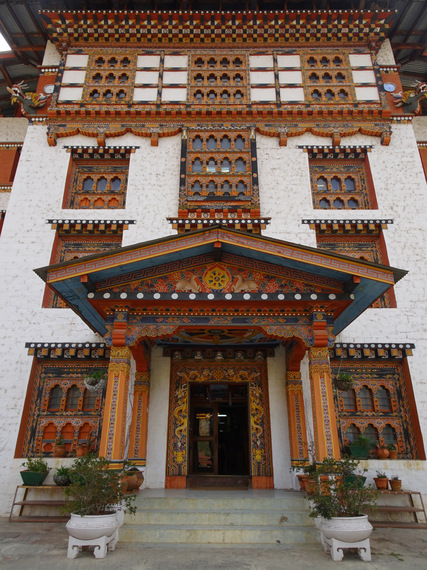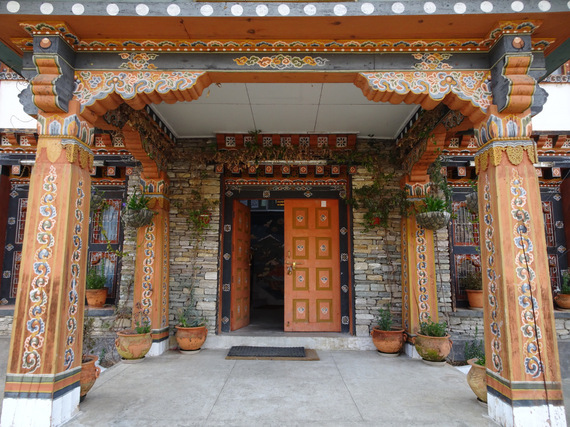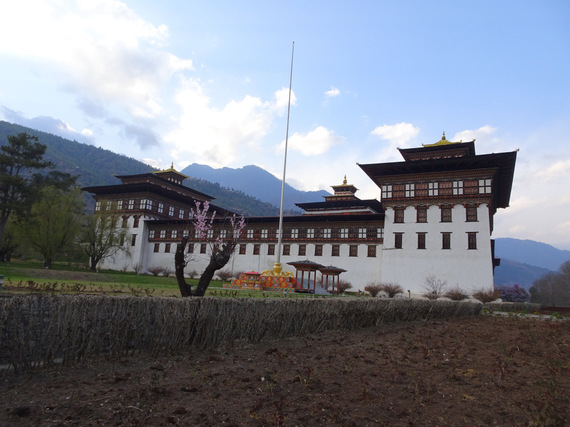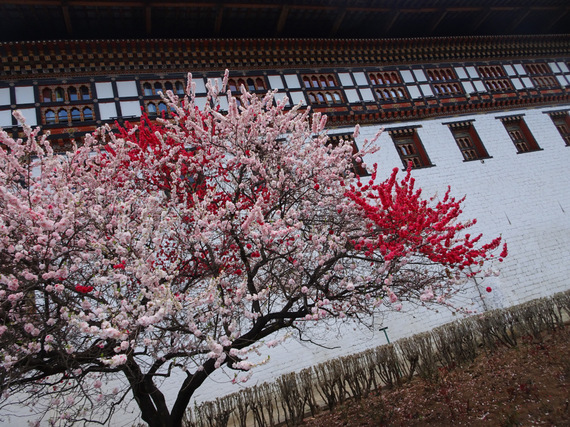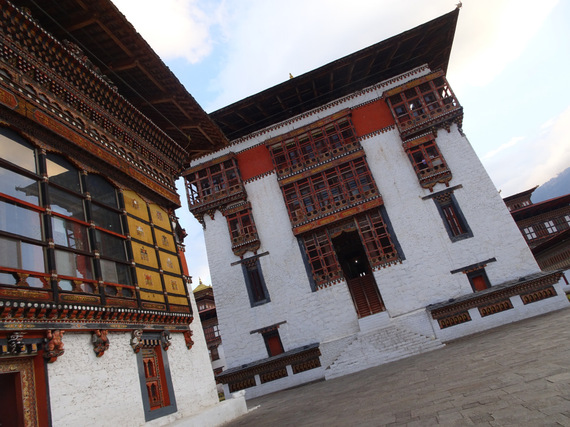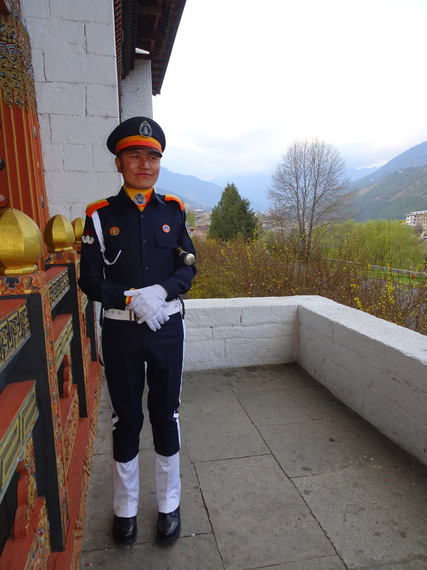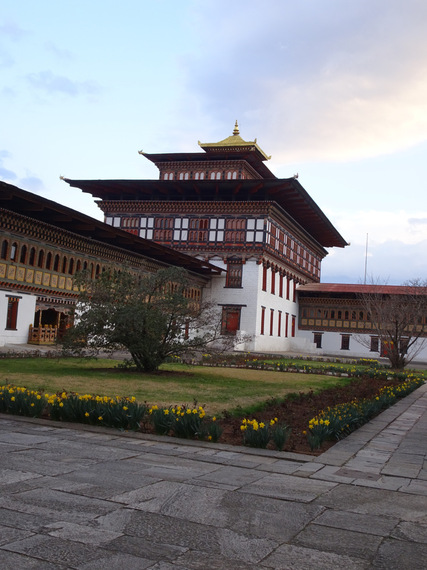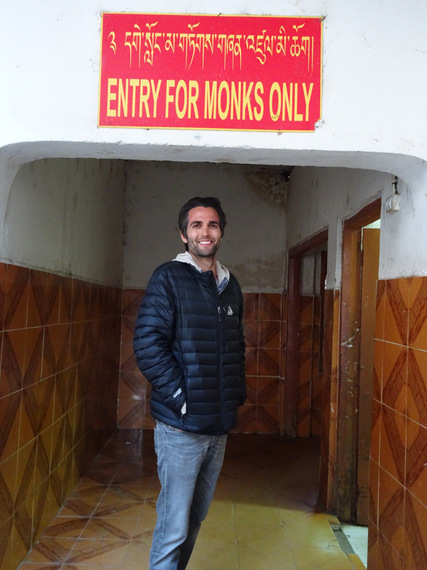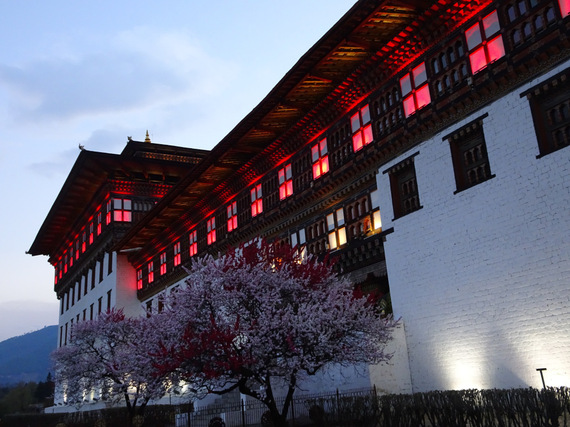We flew from Kathmandu, Nepal to Paro, Bhutan on Druk Air. Bhutan Swallowtail, our tour group, recommended we arrive extra early to the airport in order to reserve window seats on the left hand side of the plane. Very precise, right? The reason for this is because we will be passing by the Himalayan Ranges and the views are supposedly breathtaking. So we did just that. We got to the airport at 6am and were able to pick the most perfect seats, which in turn, provided us with the most perfect views. White capped mountain peaks pierced your eyes with beauty. We flew right by eight of the ten highest mountains on EARTH. No big deal. I felt like they were going to eat us alive. They were that powerful. But the most exciting sight of all was Mount Everest. Yes, Mount Everest. Have you heard of it? The highest peak in the center of this photo below is the infamous Mount Everest. Why hello. It's such a pleasure to meet you. Unlike Tom Cruise, this mission was possible.
When we landed at the Paro airport around 11am and walked off the plane, there was this sense of tranquillity that overtook my mind and body. The sky was the brightest blue we've seen in a while, the sporadic chunks of clouds were marshmallow white, the mountain ranges were intimating yet welcoming and the air was so fresh you could feel your lungs going through an instant detox. It was by the far the prettiest, calmest, cleanest, most simple airport I've ever stepped foot in. Their buildings resembled that of the traditional Buddhist architecture with colorful paintings, intricate designs and mesmerizing aesthetics. Something is telling me I'm going to really, really like it here.
After we went through customs, added yet another stamp to our passports and gathered our bags, we met up with Kezang, our twenty eight year old Bhutanese guide, and Tenzin, our twenty four year old Bhutanese driver. Both of them will be with us for the next seven days - all day, every day (except for sleeping, duh). Good thing we all seem to be easy going and fun or else that much time spent together is the perfect recipe for disaster. When we got in the car and drove away, we almost had reverse culture shock. Being in India and Nepal for the past nine weeks, we became so numb to insane traffic, intense pollution, crazy driving and endless honking. But here, it's the polar opposite (at least so far). I don't think they even know what the word traffic means. While cruising down the "highway", we were constantly noticing signs on the side of the road such as "Life is a journey, complete it", "Speed thrills but kills", and "Live for today, drive for tomorrow". Optimism at its best. Glass is always half full.
Random side note(s). Bhutan is fifteen minutes ahead of Nepal, thirty minutes ahead of India and now thirteen hours ahead of Los Angeles (would have been fourteen but daylight savings happened for the USA). And, since Bhutan's currency is pegged from the Indian Rupee, we can use our left over money here. Yippee. Our itinerary is as follows: we will be spending two nights in Thimphu, one night in Punakha and three nights in Paro.
Okay, back to my story. The drive from Paro to Thimpu is about one hour. Since we didn't fly across the world to get here like most people do and we weren't overwhelmed with jet lag, Kezang wanted to take us to a few sites in Paro now versus when we come back at the end of our trip. The thought process behind this is because the annual Paro Tshechu Festival will be taking place starting March 19, which is partly why we chose these dates, so most of the area will be congested with people from all over the country. That being said, our first stop was the National Museum of Bhutan, which opened to the public in 1968. However, the cylindrical or conch shaped building was originally constructed in 1649 C.E. and served as a watchtower to protect the Paro Rinpung Dzong below from invasions in all directions. Here we learned some key facts about their culture, their beliefs and their history. A visit through the galleries showed the country's transition from the Stone Age to a modern Mahayanist Buddhist and multicultural kingdom. Definitely informative and a perfect way to introduce us to the very unknown Bhutan. While we were walking up the steps towards the entrance, I couldn't help but notice some pretty flowers bursting like a pink Starburst so cheerfully from the trees. They resembled that of the cherry blossoms in Japan. When I asked Kezang what type of flower they were, he confirmed they were in fact cherry blossoms. Oh my god (maybe I should say oh my Buddha here instead). This is the best surprise party anyone could give me. I've always wanted to see cherry blossoms well blossom. Absolutely incredible. What a lovely site.
Our second stop in Paro before heading to Thimphu was the Paro Rinpung Dzong, which means "Fortress of the Heaped Jewels". Built in 1644, the Paro Dzong is one of Bhutan's most impressive and well-known dzongs (fortress), and perhaps the finest example of Bhutanese architecture in the country. The massive buttressed walls that tower over the town are visible throughout the valley. The fort was used on numerous occasions to defend the Paro valley from invasions by Tibet. Today, it houses about two hundred monks and when I saw a handful of young monks walking around, I became curious about the process. Who can become a monk? Are you forced or is it voluntary? Is there a minimum age? Kezang basically explained to us that there used to be a "monk tax" where families had to give one of their sons to the monastery. However, now that there are so many, it is more of a personal decision. Some start as young as two years old. Kids don't even know their name or their favorite color at two years old let alone knowing they want to dedicate to their entire life to Buddhism. Such a different upbringing than what we are used to. On the opposite spectrum, some start as old as sixty. That's the cool thing about Buddhism. There is no judgement and no discrimination. Come one, come all.
It was around 1pm so we headed to lunch, which consisted of traditional Bhutanese food such as butter tea, chiles and cheese, red rice, steamed vegetables and egg noodles. I didn't love the butter tea (tasted almost like sipping on a melted stick of butter) but the chiles and cheese had me at hello. Absolutely delicious. For a lack of a better comparison, the cheese resembled that of fake nacho cheese you get at the movies or a sporting event but instead of chips, it was slices of chiles that were so spicy. My lips were tingling dramatically out of control as if I used a pound of ghost peppers as chapstick. One of those hurts so good feelings.
Now that we refueled our bodies, we continued along the way to Thimphu. The next stop was Tachogang Lhakhang, which is an iron suspension bridge made out of chains. It was built in the early 15th century by Yogi Thangtong Gyalpo. While slowly and carefully walking across the bridge, you couldn't help but notice the clearer than clear eyes water flowing below.
Then we came across a fork in the river, where the Paro and Thimphu Rivers meet which flows down to India. At the crossroads, there were three different stupa styles. One was from Nepal, one was from Tibet and one was from Bhutan. Oh and there was a massive billboard that had a photo of the King and Queen. Seems to be typical.
en we finally arrived in Thimphu, we got out of the car and strolled down what they refer to as Main Street. It totally reminded me of the Main Street at Disneyland. Very clean, quiet, happy, and nearly perfect. Almost fake looking. Thimphu is one of the only capital cities in the world, if not the only, where there are no traffic lights so the few cars that do pass by are orchestrated by a man in a legit uniform with white gloves stationed outside a festive booth. And everyone actually follows directions of when it's their turn to go and their turn to stop. Well trained individuals.
Around 4:30pm, we arrived at Peaceful Resort, our hotel for the next two nights. It was a ten minute drive from town, located higher in the hills than in the city center. Since Bhutan Swallowtail booked all of our accommodations for us, we had no idea what to expect. And because I'm such a control freak (admitting it is the first step to recovery), this was really hard to accept. Nevertheless, the Peaceful Resort was definitely a decent place so I felt a little more comfortable now. Our room was made of all wood, giving off that wintery cabin vibe. For the remainder of the evening, we laid low, had dinner and got a good night's sleep since tomorrow will be yet another full day of sightseeing, learning and of course, smiling.
Wednesday, March 16, started off with a visit to the Takins, which were declared Bhutan's National Animal on November 25, 1985. A Takin is one of the larger and stockier goat antelopes, generally weighing around 770 pounds. It is a very unique looking animal that is believed to have the head of a goat and the body of a cow. They are usually found in the Himalayas and western China. Just like everything in Bhutan, there is a mythological story behind the creation of this animal but since it does sound rather crazy, I will spare you the details.
Next, we went for a short hike through a park high above the city of Thimphu. Everyday for the next four days we will slowly prepare ourselves for the Tiger's Nest, which is an intense climb up a steep mountain over 10,000 feet above sea level. With the drastic change in altitude here, Kezang wants us to get acclimated before he throws us to the wolves. And I thanked him kindly for that. Throughout this walk, there were an abundance of prayer flags hanging from every tree possible. They add so much life and color to the atmosphere and obviously have such a strong spiritual meaning behind them as well. Not to mention, the views were spectacular. Everywhere you looked there were mountains and mountains and mountains and trees and trees and trees. I just love how underdeveloped this country is. More land doesn't equal to more buildings, at least for now. And, people get fined for littering which is how it should be. There was so much trash all over India and Nepal that to see a clean environment is refreshing on so many levels.
The end of our hike was rewarded with the Buddha Dordenma, which is a gigantic 169 foot tall statue, making it one of the biggest of Lord Buddha's in the world. Made of bronze and gilded in gold, it symbolizes indestructibility in addition to peerless virility to bestow blessings, peace, and happiness on the world. Completed in 2015, the goal is for this monument to become a major pilgrimage center for Buddhists all over the world to practice, meditate and retreat. It was ridiculously stunning. Your mouth instantly dropped to the ground in awe. The detail was impressive from the nail buds to the chest to the face. Beautifully created. Inside there was a Buddhist temple that consisted of 100,000 eight inch Buddha statues. Unfortunately, we couldn't take photos of the inside. Sorry. You'll just have to go there and see it for yourself. I promise it will be worth it.
Next up was the National Memorial Chosen Stupa, which was built in 1974 by the Queen in memory of her royal son, the third King who died in 1972 at the age of 44. Locals come here at all hours of the day for their daily worship. They always walk around the stupa clockwise three times. It was packed with quite a few elderly folks, almost as it if it was an outdoor assisted living center. Made for intriguing people watching. And there was the most adorable little boy who was so proud to show off his traditional Bhutanese attire.
Simply Bhutan, a living museum and photo studio, is aimed at the preservation and promotion of the Bhutanese culture. Vinny and I had the privilege to dress up in local clothing, see a traditional song and dance be performed, enjoy some authentic food, learn more about their fascination with the phallus, play some archery since it is their national sport (Vinny almost hit the bullseye!) and the most inspiring of all, meet Pema Tshering, a talented 30 year old craftsman, who was born with cerebral palsy and congenital deformities in his spinal column. With limited mobility, Pema is only able to use his feet to carry out his daily routines. He now supports himself through the sales of his woodwork at the museum gift shop. Pema's unwavering belief in himself and his sheer optimism continues to inspire many people living with disabilities. His story tells us that with self-determination, anything is possible.
Bhutan has a very unique interest in postal stamps so we visited the Postal Museum to learn more about this borderline obsession. While bare-footed couriers still deliver the mail in many remote regions of this Himalayan kingdom, Bhutan's postage stamps remain world-renowned in the philatelic community. Colorful, creative and collectible, Bhutan's stamp launch in the 1960s of the world's most innovative stamps not only caused a sensation each time they were released, but more importantly were valued by Bhutan as its chief revenue producer for many years. Prior to the 1960s, Bhutan had remained closed to the outside world. Then in 1962, Bhutan released its first international postal stamps and began its postal program. This came about through the partnership and innovation with an old friend to Bhutan, an energetic and pioneering entrepreneur, Burt Todd, who was also the first American to enter Bhutan. Postage stamps became the vehicle through which Bhutan could begin to open its doors and be internationally recognized as a sovereign nation amidst two huge superpowers - China to the north and India to the south. The most infamous of them all were the Bhutan record stamps. These stamps played the Royal Bhutan Anthem, folk-songs and a short history of Bhutan. Pretty serious, huh? Vinny and I had our own stamps made and mailed postcards back home to our families. When in Bhutan, I guess...
After we put our faces on stamps, we visited The Authentic Bhutanese Crafts Bazaar situated in the centre of Thimphu town. It is a mile-long row of shops made of bamboo and other eco-friendly material. There are about eighty four stalls in total and almost all shopkeepers are women with the men folk helping them with the more strenuous duties. The beauty of the products lies in their original craftsmanship and in their indigenousness. The shops were allotted to these womenfolk on the condition that they would only sell products which were produced in Bhutan and not import products from other countries. The ladies are helpful, courteous and very obliging while you browse through their wares. A very pleasant experience for those just window shopping.
Even their library was incredibly beautiful from the outside, exemplifying the traditional Buddhist architecture like the rest of the city. As we slowly walked up and down the aisles of books and books and books, you can't help but notice that about 95% of them are on Buddhism with the other 5% sharing the social sciences and history categories. The library is also home to the world's largest published book (certified by Guinness World Records) about one of the world's smallest countries. This book, titled Bhutan, is over five by seven feet, includes 114 pages and weighs about 133 pounds. It is a visual odyssey across the kingdom that took over 40,000 photographs throughout four extensive expeditions by helicopter, mountain ponies, trekking with packhorses and yaks, and journeys by caravan on far-flung roads. Only 500 copies were printed and in order to obtain this book, you had to make a $15,000 donation where proceeds fund Bhutanese schools.
Last on our Thimphu tour, was Tashichho Dzong or the "Fortress of Splendid Religion". It was first constructed in 1216 A.D but after a fire in 1771 and an earthquake in 1897, it was rebuilt in 1902. Then, when the capital of Bhutan was moved to Thimphu in 1961, it was renovated and enlarged using neither nails nor written plans. Tashichho Dzong has been the seat of the government since 1962 and presently houses the throne room and offices of the king, the secretariat and the ministries of home affairs and finance. Other government departments are housed in buildings nearby. We couldn't enter until after 5:30pm because all of the government officials were still conducting business. At night, it lit up with red lights and it was oh so beautiful.
The next morning we checked out of the Peaceful Hotel around 8:30am and headed to the Punakha Valley, which is about a three hour drive. See you there!
